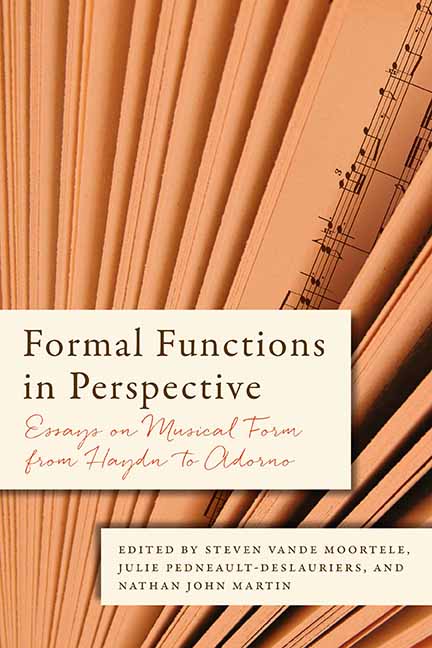Book contents
9 - Discipline and Punish among the Winds in the First Movement of Beethoven’s First Symphony
Published online by Cambridge University Press: 26 May 2021
Summary
Example 9.1 provides a condensed score for measures 53–88 of the first movement of Beethoven's First Symphony. The passage represents the second theme, which Donald Francis Tovey considers a “small and comic sonata for orchestra.” In 1838, Berlioz wrote that the symphony as a whole, “by its form, by its melodic style, and by its sobriety of harmony and instrumentation, is altogether distinct from the other compositions of Beethoven by which it was succeeded. The composer evidently remained in course of writing it [sic], under the influence of Mozart's ideas; which he sometimes enlarges, and everywhere imitates with ingenuity.” He writes of the second theme in particular: “by means of a half-cadence repeated three or four times, we arrive at an instrumental design in imitations at a fourth; our astonishment at finding which in such a place is increased by the fact that the same design has been often employed in the overtures of several French operas.” Setting the agenda for a number of more recent studies of the first movement of opus 21, Hermann Kretschmar, in his Guide to the Concert Hall, writes that the “second theme is pure Mozart. The jubilant Nachgesang that follows appears verbatim in the ‘Jupiter’ and other symphonies of the Master of Salzburg.” Berlioz's and Kretschmar's linkage to Mozart in general and Kretschmar's connection to Mozart's Symphony no. 41 in C Major, K. 551 (the “Jupiter”) in particular have been repeated by Elaine Sisman, who also argues that the First Symphony recalls elements not only of the “Jupiter” Symphony but also of Haydn's Symphony no. 97. Carl Schachter's comparison of the modulatory plan in the development sections of the First Symphony and the “Jupiter” Symphony clearly belongs to this tradition, as does Daniel Heartz's discussion of the movement.
The question of Beethoven's psychological dependence on Haydn and Mozart is certainly an interesting one, but we shall set it aside for now to focus on certain structural and formal features of the theme. The passage is discussed by James Hepokoski and Warren Darcy in connection with the general problem of distinguishing the second thematic section from the closing section. In their view, second themes end with the first satisfactory perfect authentic cadence in the second theme's key (an “essential expositional closure” in their terminology).
- Type
- Chapter
- Information
- Formal Functions in PerspectiveEssays on Musical Form from Haydn to Adorno, pp. 295 - 316Publisher: Boydell & BrewerPrint publication year: 2015



